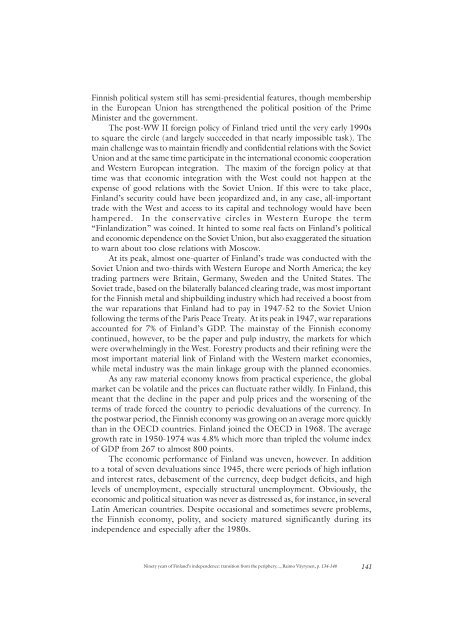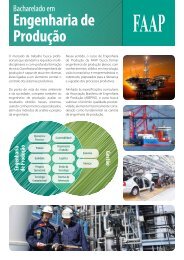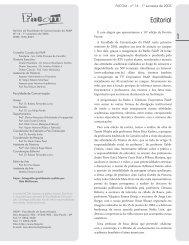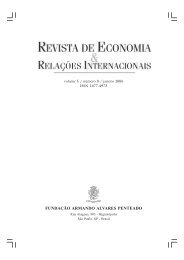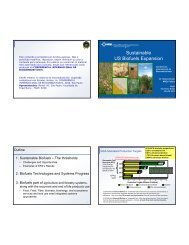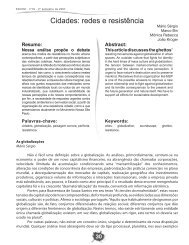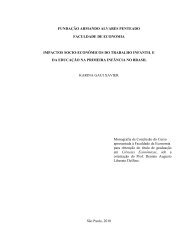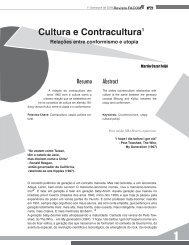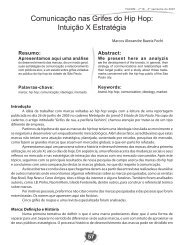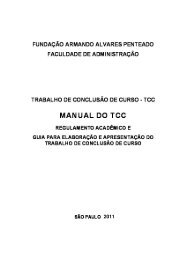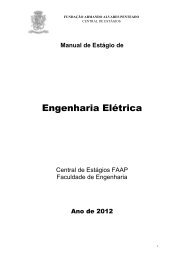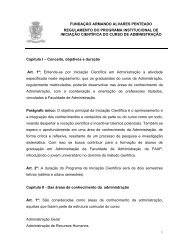Revista Economia n. 13.pmd - Faap
Revista Economia n. 13.pmd - Faap
Revista Economia n. 13.pmd - Faap
Create successful ePaper yourself
Turn your PDF publications into a flip-book with our unique Google optimized e-Paper software.
Finnish political system still has semi-presidential features, though membership<br />
in the European Union has strengthened the political position of the Prime<br />
Minister and the government.<br />
The post-WW II foreign policy of Finland tried until the very early 1990s<br />
to square the circle (and largely succeeded in that nearly impossible task). The<br />
main challenge was to maintain friendly and confidential relations with the Soviet<br />
Union and at the same time participate in the international economic cooperation<br />
and Western European integration. The maxim of the foreign policy at that<br />
time was that economic integration with the West could not happen at the<br />
expense of good relations with the Soviet Union. If this were to take place,<br />
Finland’s security could have been jeopardized and, in any case, all-important<br />
trade with the West and access to its capital and technology would have been<br />
hampered. In the conservative circles in Western Europe the term<br />
“Finlandization” was coined. It hinted to some real facts on Finland’s political<br />
and economic dependence on the Soviet Union, but also exaggerated the situation<br />
to warn about too close relations with Moscow.<br />
At its peak, almost one-quarter of Finland’s trade was conducted with the<br />
Soviet Union and two-thirds with Western Europe and North America; the key<br />
trading partners were Britain, Germany, Sweden and the United States. The<br />
Soviet trade, based on the bilaterally balanced clearing trade, was most important<br />
for the Finnish metal and shipbuilding industry which had received a boost from<br />
the war reparations that Finland had to pay in 1947-52 to the Soviet Union<br />
following the terms of the Paris Peace Treaty. At its peak in 1947, war reparations<br />
accounted for 7% of Finland’s GDP. The mainstay of the Finnish economy<br />
continued, however, to be the paper and pulp industry, the markets for which<br />
were overwhelmingly in the West. Forestry products and their refining were the<br />
most important material link of Finland with the Western market economies,<br />
while metal industry was the main linkage group with the planned economies.<br />
As any raw material economy knows from practical experience, the global<br />
market can be volatile and the prices can fluctuate rather wildly. In Finland, this<br />
meant that the decline in the paper and pulp prices and the worsening of the<br />
terms of trade forced the country to periodic devaluations of the currency. In<br />
the postwar period, the Finnish economy was growing on an average more quickly<br />
than in the OECD countries. Finland joined the OECD in 1968. The average<br />
growth rate in 1950-1974 was 4.8% which more than tripled the volume index<br />
of GDP from 267 to almost 800 points.<br />
The economic performance of Finland was uneven, however. In addition<br />
to a total of seven devaluations since 1945, there were periods of high inflation<br />
and interest rates, debasement of the currency, deep budget deficits, and high<br />
levels of unemployment, especially structural unemployment. Obviously, the<br />
economic and political situation was never as distressed as, for instance, in several<br />
Latin American countries. Despite occasional and sometimes severe problems,<br />
the Finnish economy, polity, and society matured significantly during its<br />
independence and especially after the 1980s.<br />
Ninety years of Finland’s independence: transition from the periphery..., Raimo Väyrynen, p. 134-146<br />
141


